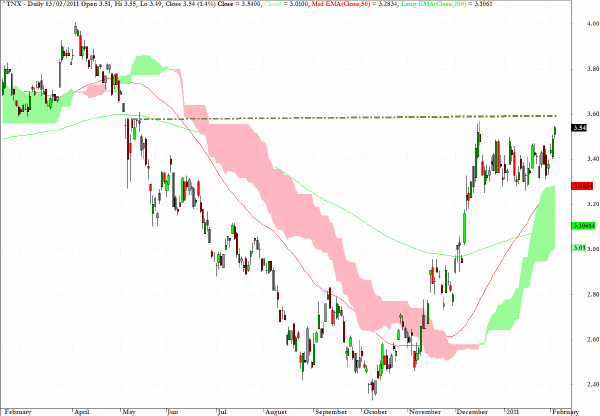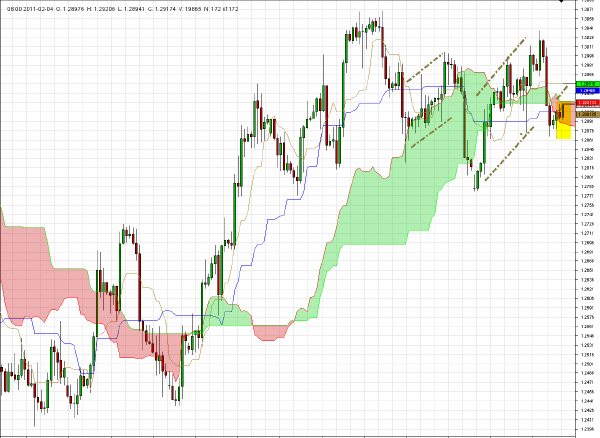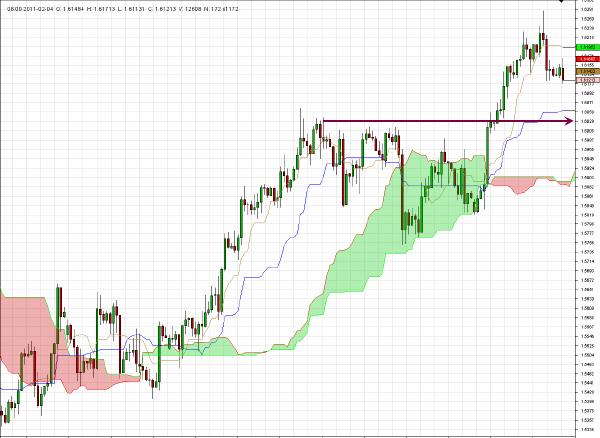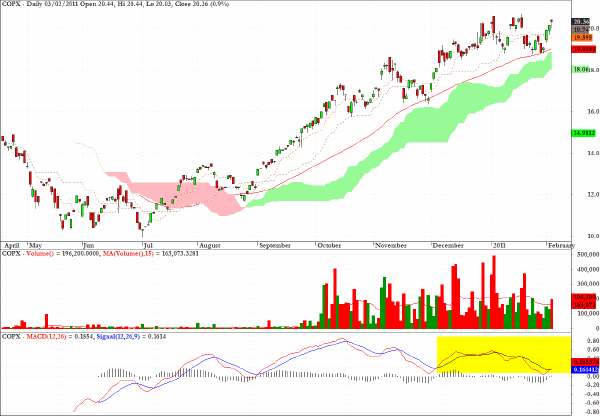The daily chart showing the yield on the US 10-year note shows that traders have brought the current yield exactly up to a potential breakout level which could be triggered in today’s trading.
The daily chart showing the yield on the US 10-year note shows that traders have brought the current yield exactly up to a potential breakout level which could be triggered in today’s trading.
A close above 3.6% today, which could arise if the NFP data is too positive, would suggest that the markets will increasingly become wary about whether QE2 and perhaps QE3 is such a good policy initiative with so much evidence from other markets that the inflation genie has wriggled out of the bottle.
On that very subject, I thought that the following news story which was reported by BBC News today seems relevant - especially as followup to my coverage of the Mumbai Sensex index in this week’s commentaries, as well as two TV slots which I presented yesterday, on this theme of the BRIC economies potentially being the canary in the coal mine with respect to the fallout for equity markets from increasing commodity price inflation.
India’s prime minister has warned that the country’s rapid economic growth is under "serious threat" from inflation.
Manmohan Singh said getting inflation under control was a matter of urgency, raising the prospect of an eighth interest rate rise in under 12 months.
Emerging markets like India, where GDP growth is running at 8.5%, are helping to drive global economic recovery.
But Mr. Singh said India’s inflation rate of 8.4% - and food price inflation of 17% - was unsustainable.
"Inflation poses a serious threat to the growth momentum. Whatever be the cause, the fact remains that inflation is something which needs to be tackled with great urgency," he said.
Analysts believe that surging food and oil prices mean that India’s central bank may have to raise interest rates before its next policy meeting, which is scheduled for 17 March.
India’s stock market has fallen this year on fears that high inflation will scare off foreign investors.
It is also worth noting that the Mumbai exchange reversed again in Asian trading Friday erasing all of Thursday’s gains and closed almost exactly at the critical 18,000 level. 
EUR/CHF continues to look vulnerable to lower prices. The decision by the ECB to hold rates at 1%, despite some hand wringing gestures from Mr. Trichet about possible inflationary pressures, caused the euro to drop precipitously against the dollar yesterday but, as the bearish flag patterns on the 240-minute chart below suggest, my preference would be to remain short the euro against the Swiss franc. 
GBP/USD continued its slide after failing to break above $1.63 and on the four-hour chart below there is a case to be made that $1.6020 would be a good target for a rebound - which could potentially see sterling try yet again to mount a substantial rally.
The medium-term outlook for the UK currency will become clearer after next Thursday’s MPC meeting of the BOE where the rumors are that the bank might nudge the repo rate up by 25 bps. Should that not happen, which is my suspicion, then sterling will, in similar fashion to what happened to the euro yesterday, drop quickly against the dollar and the other crosses as well. 
COPX, an exchange traded fund which tracks Global Copper Miners, has some negative divergences on the MACD chart. I would not recommend a short position in the metal as this market is subject to its own idiosyncrasies but the copper miners do look rather stretched and fully priced at present. 
Clive Corcoran is the publisher of TradeWithForm.com, which provides daily analysis and commentary on the US stock market.